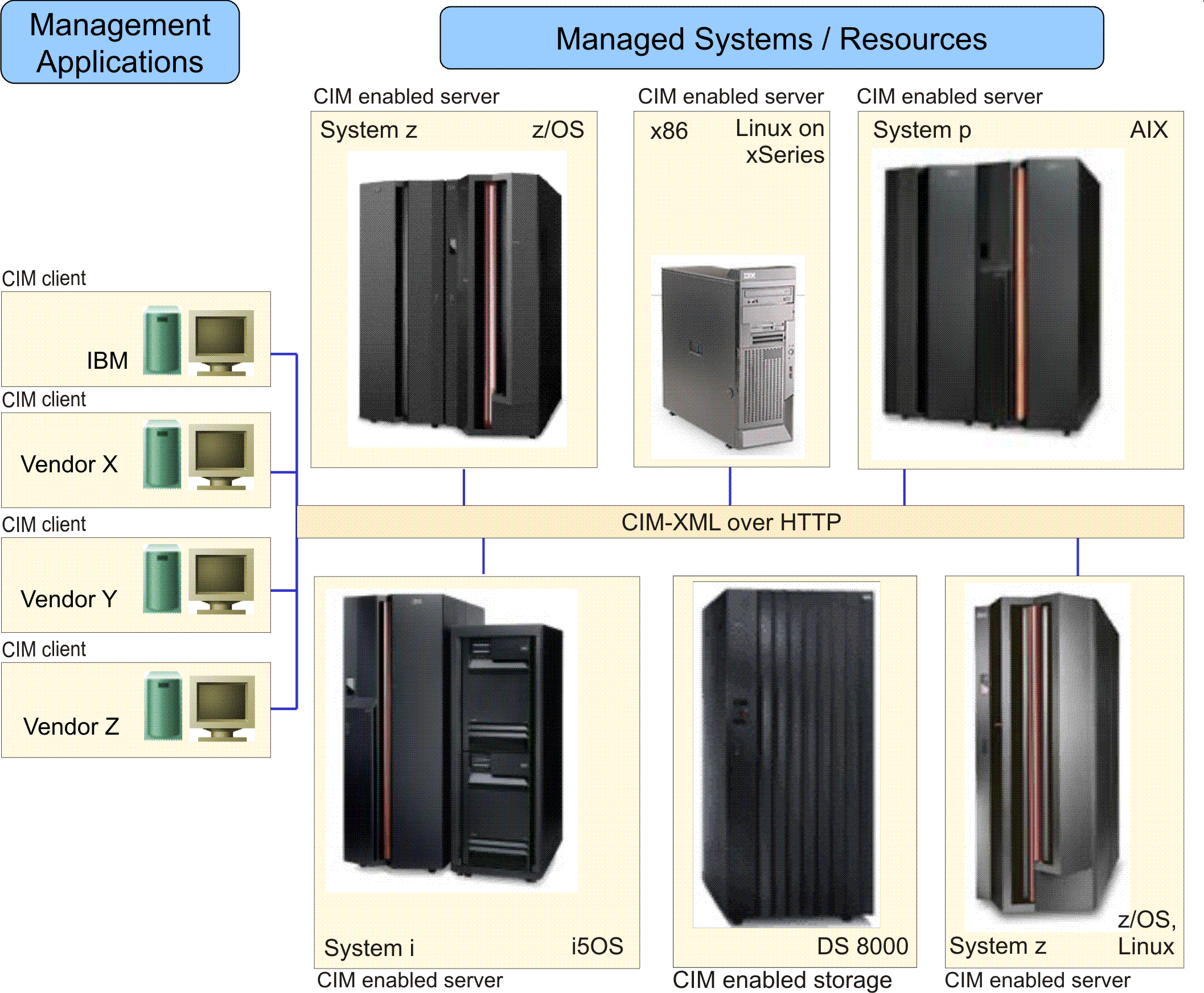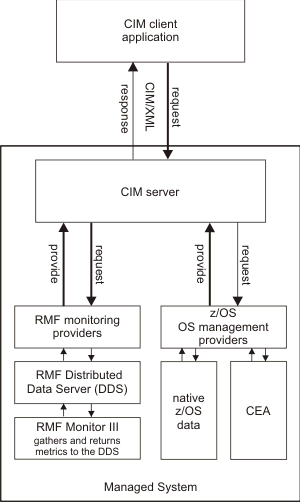 z/OS Common Information Model User's Guide
z/OS Common Information Model User's Guide
 z/OS Common Information Model User's Guide
z/OS Common Information Model User's Guide
|
Previous topic |
Next topic |
Contents |
Index |
Contact z/OS |
Library |
PDF
Introduction z/OS Common Information Model User's Guide SC34-2671-00 |
|
IntroductionThe Common Information Model (CIM) is a standard data model developed by a consortium of major hardware and software vendors (including IBM®) called the Distributed Management Task Force (DMTF) as part of the Web Based Enterprise Management (WBEM) initiative. WBEM includes a set of standards and technologies that provide management solutions for a distributed network environment. Interoperability is a major focus of WBEM, and using WBEM technologies can help you develop a single set of management applications for a diverse set of resources and systems. Figure 1 shows a sample environment in which management applications can run that use the DMTF CIM standard data model. Figure 1. Sample network environment managed with CIM management applications
 CIM is a major component of the WBEM initiative, providing a model for describing and accessing data across an enterprise. CIM consists of both a specification and a schema. The specification defines the details for integration with other management models, while the schema provides the actual model descriptions. CIM supports the concept of indications as described in CIM indication concept. With support for the CIM server on systems running z/OS, users have the ability to access z/OS resources through an extendible industry standard model. This document contains information about how to use the CIM server for z/OS for this purpose. CIM for z/OS includes:
Figure 2 illustrates how the CIM server works in the z/OS environment: A CIM client application requests the CIM server to return information about z/OS resources, in this case about basic operating system (OS) data as well as monitoring metrics, in this example RMF™ metrics. The CIM server invokes the according CIM providers which retrieve the requested data associated to z/OS system resources. The z/OS RMF monitoring provider invokes the RMF Distributed Data Server (DDS) which in turn collects RMF Monitor III performance data. The CIM server consolidates the data from the providers and returns them back to the calling client through the CIM over HTTP protocol. Figure 2 shows two types of CIM providers: RMF monitoring providers that use the RMF DDS to access the z/OS system, and z/OS operating system management providers that access the z/OS system data directly. Figure 2. Exemplary components of the CIM server in a z/OS environment

Important Note:
Each IBM eServer™ operating system is supporting a specific open source implementation of a CIM server. The "eServer Common Information Model" document contains overall information about how to use CIM for systems management on IBM eServers. Users of CIM for z/OS need to know this information. The present z/OS Common Information Model User’s Guide contains the z/OS-specific supplements and deviations from the common eServer CIM and from OpenPegasus. 


|
 Copyright IBM Corporation 1990, 2014 Copyright IBM Corporation 1990, 2014 |